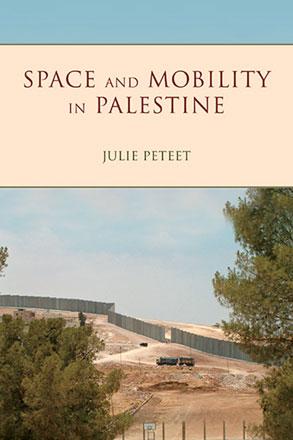You are here
Undercutting the sectarian approach
By Sally Bland - Aug 28,2016 - Last updated at Aug 28,2016
The Alawis of Syria: War, Faith and Politics in the Levant
Edited by Michael Kerr and Craig Larkin
London: Hurst and Company, 2015
Pp. 384
In this book, fourteen scholars, mostly Europe-based, survey the trajectory of the Alawis from their mystical origins as followers of Muhammad Ibn Nusayr in 8th century Iraq, to state-power holders in modern Syria. In the process, one gains a sense of Syria’s history per se and of some of its other ethnic, religious and regional communities’ role therein.
While most of the contributors relate their historical analysis to the causes and features of the current war, they eschew heated, partisan views and sectarian labels in favour of objectivity. In the words of co-editor Michael Kerr: “Viewing the war for Syria primarily through the lens of either third party intervention or sectarianism distorts the complexity of the Alawi community’s contemporary experience and its diverging responses to it… Furthermore, one cannot catalogue, connect and affirm the Alawi community’s historical trajectory or its ancient doctrinal religious and tribal identities neatly with either the struggle for Syria today or its part in it”. (pp. 1-2, 7)
Like many other contributors, Raymond Hinnebusch argues that Alawi identity is not monolithic: “multiple possible identities exist in Syria, ranging from the narrowest — clan, tribe, and sect — to broader party, class and state identifications, to supra-state identities… several identities can be held simultaneously” and they can change since they are shaped by material reality… “agency also matters, namely the promotion of identities by political entrepreneurs”. (pp. 107-8)
In another chapter, Max Weiss suggests rethinking the “mosaicist” and “sectarianist” approaches “that have obfuscated some of the country’s most interesting and complex social realities”. (p. 64)
In the view of Leon T. Goldsmith, “To be Alawi means many things to different members of the sect, with multiple sources of overlapping identity including Arab, Muslim, Shi’a, Syrian, Turkish, Lebanese, urban, rural, working class and elite”. (p. 141)
Further evidence of the community’s diversity is presented in Carsten Wieland’s article about Alawis’ role in the secular opposition, historically and in the early stages of the 2011 uprising.
Several presuppositions about the Alawi community’s history are revisited and partially discredited. The idea that the Alawis were a persecuted minority under Ottoman rule is disputed by Stefan Winter based on archival records from Istanbul and Tripoli. As to the claim that the Alawis collaborated with the French colonial authorities during the Mandate period, this was true of only part of the community. Another part actively rebelled against the French plan to create a separate Alawi state.
The heart of the matter is how Alawis came to dominate the Syrian state, which hinges on an analysis of their agency in the context of the rise of nationalism, the army and the Ba’ath Party, leading this rural community to seek state positions as a means of social mobility — and, of course, power-seeking on the part of leaders.
Here several ironies come into play as pointed out by Fabrice Balanche: “While underdevelopment and demographic dynamism in the 1950s and 1960s arguably motivated and facilitated the Alawi community’s rise to power, their demographic transition and social promotion were actually significant factors in weakening the Asad state… While former Syrian president Hafez Al Asad’s regime benefited from the poverty of the Alawis, Bashar’s rule has been weakened by the exclusive social promotion of the Alawi community during his tenure”. (p. 79)
Most contributors agree that it was a drive for total control, not sectarianism, which motivated the former president’s state-building strategies whereby trusted Alawis, often kinsmen, were disproportionately appointed to crucial positions in the military and security apparatus.
Yet, Asad also created a broad coalition, including significant Sunni representation, in the government, Ba’ath Party and economy. The narrowing of the regime’s social base occurred when Bashar instituted neoliberal reforms that privileged investors over its traditional constituencies, thus breaking the social contract that, alongside co-optation and harsh repression of dissent, had underpinned regime stability for decades.
Still, none of the contributors contend that the economic situation was the main cause of the war.
The book concludes with a very interesting chapter evaluating the viability of the Syrian regime’s repressive strategy for overcoming the insurgency. There are no easy answers to be found in this book; the contributors do not pretend to have solutions to the conflict, but their powerful, fact-based arguments dispel any notion that the Syrian war is primarily a sectarian conflict, thus paving the way for a more fruitful approach.
Related Articles
While 40 years of seldom-interrupted stability under Hafez and Bashar Assad’s rule may make today’s chaos appear as an anomaly
Space and Mobility in PalestineJulie PeteetUS: Indiana University Press, 2017Pp.
“Syria Speaks” is a compilation of personal narratives, short fiction, essays, poetry, song lyrics, posters, art works and photos that express the thinking and experience of the democratically-minded Syrians who sparked the initial nonviolent phase of the 2011 uprising, before it was overtaken by regime brutality and religious extremists.















